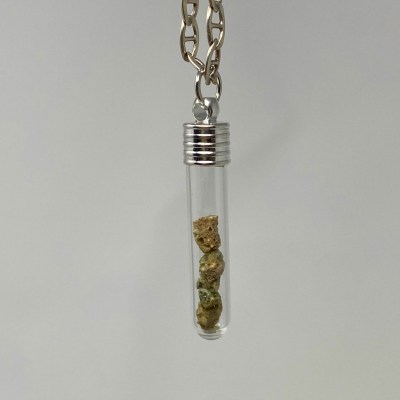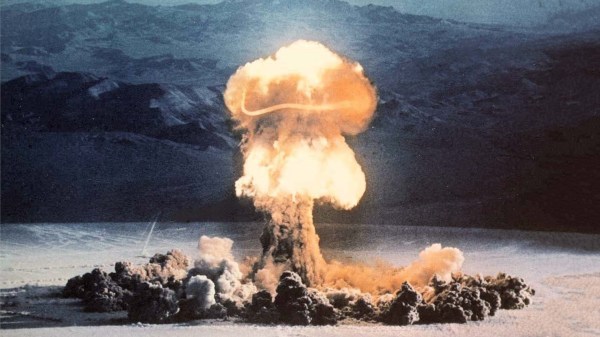While some byproducts recall an idyllic piece of Americana, others remind us that the past is not always so bright and cheerful. Trinitite, created unintentionally during the development of the first atomic bomb, is arguably one of these byproducts.

Whereas Fordite kept growing back for decades, all Trinitite comes from a single event — the Trinity nuclear bomb test near Alamogordo, New Mexico on July 16, 1945. Also called ‘atomsite’ and ‘Alamogordo glass’, ‘Trinitite’ is the name that stuck.
There wasn’t much interest in the man-made mineral initially, but people began to take notice (and souvenirs) after the war ended. And yes, they made jewelry out of it.
Although there is still Trinitite at the site today, most of it was bulldozed over by the US Atomic Energy Commission in 1953, who weren’t too keen on the public sniffing around.
There was also a law passed that made it illegal to collect samples from the area, although it is still legal to trade Trinitite that was already on the market. As you might expect, Trinitite is rare, but it’s still out there today, and can even be bought from reputable sources such as United Nuclear. Continue reading “Boss Byproducts: The Terrible Beauty Of Trinitite”












